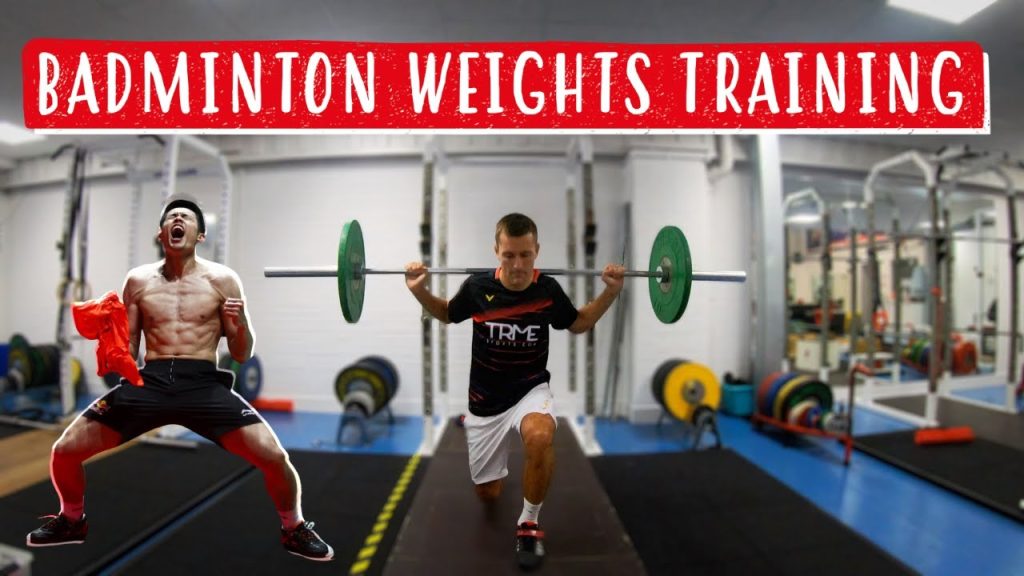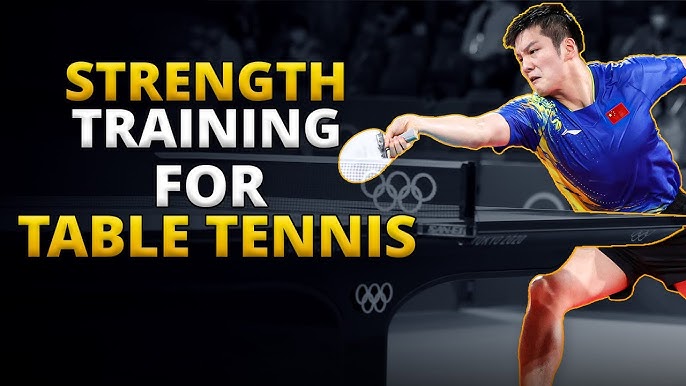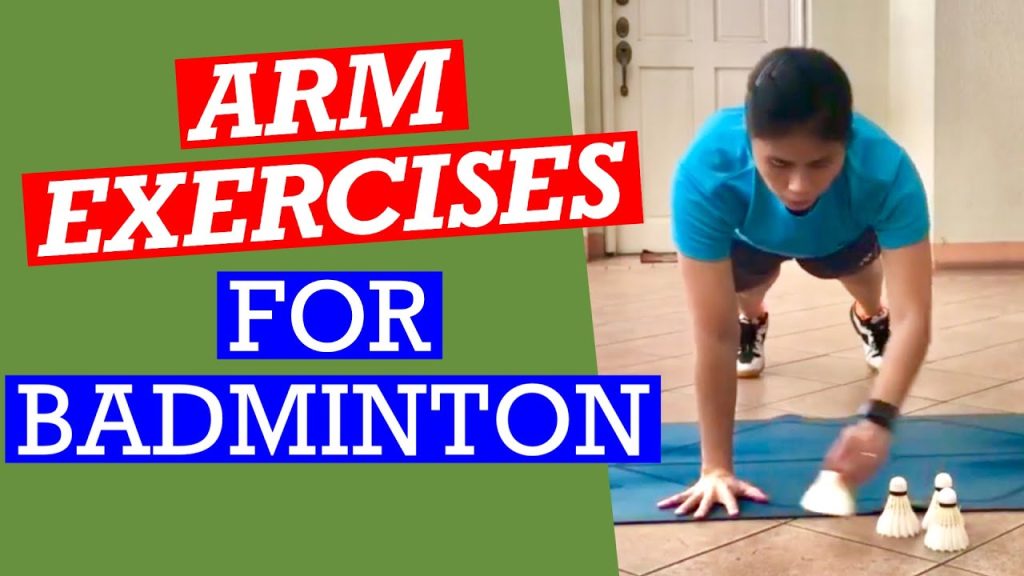Strength training is crucial for badminton players. It enhances power, speed, and endurance.
In badminton, agility and quick reflexes are essential. Strength training can significantly boost these abilities. A well-structured program helps players move faster and hit harder. Additionally, it reduces injury risks. Whether you’re a beginner or an advanced player, integrating strength training into your routine can offer numerous benefits.
This blog will explore how to develop an effective strength training program tailored for badminton. From key exercises to scheduling tips, we’ll cover everything you need to know to enhance your game. Ready to take your badminton skills to the next level? Let’s dive in!

Credit: www.youtube.com
Introduction To Strength Training For Badminton
Strength training is key for every badminton player. It boosts performance and reduces injury risks. Many players overlook its importance. They focus only on skills and endurance. Yet, strength training is essential for a complete training program.
Importance Of Strength Training
Strength training is not just for bodybuilders. It is vital for badminton players too. Strong muscles support rapid movements. They help in powerful shots and quick direction changes. This is crucial during intense matches.
Strength training also improves joint stability. Badminton involves a lot of jumping and lunging. Strong muscles protect the joints during these movements. This reduces the risk of injuries.
Benefits For Badminton Players
There are many benefits of strength training for badminton players. Below is a table highlighting the key benefits:
| Benefits | Description |
|---|---|
| Increased Power | Helps in delivering strong smashes and clears. |
| Improved Endurance | Allows players to sustain longer rallies and matches. |
| Better Agility | Enhances quick footwork and directional changes. |
| Reduced Injury Risk | Strengthens muscles and joints, reducing the chance of injuries. |
Besides these, strength training also enhances overall fitness. This includes better cardiovascular health and muscle tone. Badminton players often experience improved performance and confidence.

Credit: www.researchgate.net
Essential Strength Training Exercises
Strength training is vital for badminton players. It enhances performance and reduces injury risk. This section covers key exercises to build strength. We’ll focus on upper body exercises, lower body exercises, and core strengthening. Each exercise aims to improve your badminton skills and overall fitness.
Upper Body Exercises
Strong upper body muscles help in powerful smashes and quick shots. Include these exercises in your routine:
- Push-Ups: Work your chest, shoulders, and triceps. Perform 3 sets of 10-15 reps.
- Pull-Ups: Strengthen your back and arms. Aim for 3 sets of 5-10 reps.
- Dumbbell Shoulder Press: Builds shoulder strength. Do 3 sets of 8-12 reps.
- Tricep Dips: Focuses on triceps. Perform 3 sets of 10-15 reps.
Lower Body Exercises
Strong legs are essential for agility and speed on the court. Include these exercises:
- Squats: Strengthen your thighs and glutes. Perform 3 sets of 10-15 reps.
- Lunges: Improve balance and leg strength. Do 3 sets of 10 reps per leg.
- Calf Raises: Enhance calf muscles. Aim for 3 sets of 15-20 reps.
- Deadlifts: Work your hamstrings and lower back. Perform 3 sets of 8-12 reps.
Core Strengthening
A strong core improves stability and movement control. These exercises will help:
- Planks: Strengthen your entire core. Hold for 30-60 seconds, 3 times.
- Russian Twists: Focus on obliques. Do 3 sets of 15 twists per side.
- Bicycle Crunches: Work your abs. Perform 3 sets of 20 reps.
- Leg Raises: Strengthen lower abs. Aim for 3 sets of 10-15 reps.
Designing A Training Program
Designing a strength training program for badminton requires careful planning. It involves setting clear objectives, creating a structured schedule, and tracking progress. A well-designed program helps enhance performance and reduces injury risks.
Setting Goals
First, identify your strength training goals. Do you want to improve your smash power? Or do you aim to increase your endurance? Knowing your goals helps create a focused training plan. Here are some common goals:
- Increase muscle strength
- Improve agility
- Enhance endurance
- Boost speed
Creating A Schedule
Creating a schedule ensures consistency. Divide your training into specific days:
| Day | Focus |
|---|---|
| Monday | Upper Body Strength |
| Wednesday | Lower Body Strength |
| Friday | Full Body Workout |
Include rest days to allow muscle recovery. Ensure each session is no longer than one hour. Short, intense workouts are effective.
Tracking Progress
Tracking progress helps you stay motivated. Use a journal or an app to record:
- Weights lifted
- Repetitions completed
- Duration of each session
Review your progress weekly. Adjust the program as needed to meet your goals. Tracking helps you see improvements and areas needing attention.
Incorporating Plyometrics
Plyometrics are essential for a badminton strength training program. They boost power and speed. This section explores the importance of incorporating plyometrics. Learn specific drills and their benefits for explosiveness.
Plyometric Drills
Plyometric drills improve your badminton game. Box jumps are a popular choice. They enhance leg strength and coordination. Begin with a low box. Increase height as you get stronger.
Another effective drill is the squat jump. Start in a squat position. Explode upwards. Land softly and repeat. This drill builds explosive leg power.
Lateral jumps also help. Stand with feet shoulder-width apart. Jump to the side. Land on one foot. Return to the starting position. This drill enhances lateral movement.
Benefits For Explosiveness
Plyometrics boost your explosive power. This is crucial in badminton. Quick movements are necessary on the court. Plyometric training helps you move faster.
These drills improve your reaction time. You become more agile. You can reach the shuttlecock faster. This gives you an edge over your opponents.
Plyometrics also reduce injury risk. Stronger muscles support your joints. This leads to safer, more effective movements.
Incorporating plyometrics into your routine is key. It enhances your overall performance. You become a more powerful and agile player.
Functional Training For Badminton
Functional training is key for badminton players. It focuses on movements that enhance performance on the court. This type of training aims to improve strength, agility, and balance, crucial for badminton.
Sport-specific Movements
Badminton players benefit from training that mimics game actions. Incorporate movements like lunges, jumps, and twists. These exercises prepare muscles for quick, explosive actions.
Lunges are great for leg strength and stability. Jumps improve explosive power, essential for smashes and quick movements. Twists enhance core strength and rotational power.
| Exercise | Benefits |
|---|---|
| Lunges | Leg strength and stability |
| Jumps | Explosive power |
| Twists | Core strength and rotational power |
Improving Agility And Balance
Agility and balance are critical in badminton. Agility allows rapid direction changes. Balance ensures stability during fast movements.
Agility drills like ladder drills and cone drills are effective. Balance exercises include single-leg stands and stability ball exercises.
- Agility Drills: Ladder drills, cone drills
- Balance Exercises: Single-leg stands, stability ball exercises

Credit: www.researchgate.net
Recovery And Injury Prevention
Strength training is crucial for badminton players. But recovery and injury prevention are just as important. They help players stay on the court and maintain peak performance. Proper recovery ensures muscles heal and grow stronger. Injury prevention keeps players safe and able to train consistently. This section covers the essentials of stretching, flexibility, and common injuries in badminton.
Stretching And Flexibility
Stretching is vital before and after workouts. It prepares muscles for intense activity. It also reduces the risk of injuries. Focus on dynamic stretches before training. These include leg swings, arm circles, and lunges. They improve blood flow and flexibility. After training, use static stretches. Hold each stretch for 20-30 seconds. Target major muscle groups like hamstrings, quads, and shoulders. Stretching regularly enhances flexibility and range of motion.
Common Injuries And Prevention
Badminton players often face specific injuries. Common ones include ankle sprains, shoulder pain, and knee problems. Ankle sprains happen due to quick, lateral movements. Strengthen ankle muscles with exercises like calf raises and balance drills. Shoulder pain arises from repeated smashes and overhead shots. Prevent this by strengthening the rotator cuff. Use resistance bands for exercises. Knee problems can result from jumps and lunges. Strengthen the quadriceps and hamstrings with squats and leg presses.
Proper warm-up and cool-down routines reduce injury risk. Listen to your body and rest when needed. Use ice and compression for minor injuries. Seek medical advice if pain persists. Consistent recovery and injury prevention keep you strong and ready to play.
Nutrition For Strength Training
Proper nutrition is crucial for any strength training program, especially for badminton players. It fuels your body, aids in muscle recovery, and helps you achieve peak performance. In this section, we will discuss essential nutrition tips for both pre-workout and post-workout.
Pre-workout Nutrition
Your body needs energy to perform well during strength training. Consuming the right nutrients before your workout can make a significant difference.
- Carbohydrates: They are your primary source of energy. Opt for complex carbs like oats, whole grains, and fruits.
- Proteins: Help in muscle repair and growth. Include lean proteins like chicken, fish, or plant-based proteins.
- Fats: Necessary for overall health. Choose healthy fats such as avocados, nuts, and olive oil.
| Nutrient | Sources |
|---|---|
| Carbohydrates | Oats, Brown Rice, Fruits |
| Proteins | Chicken, Fish, Tofu |
| Fats | Avocado, Nuts, Olive Oil |
Aim to eat a balanced meal 2-3 hours before your training session. This will provide sustained energy and prevent digestive discomfort.
Post-workout Recovery
After a strenuous workout, your body needs to recover. Consuming the right nutrients post-workout can aid in muscle repair and replenish energy stores.
- Proteins: Essential for muscle repair. Opt for sources like protein shakes, eggs, or Greek yogurt.
- Carbohydrates: Help replenish glycogen stores. Choose whole grains, fruits, or starchy vegetables.
- Hydration: Crucial for recovery. Drink plenty of water or electrolyte-rich beverages.
A good post-workout meal could be a chicken and quinoa salad, a smoothie with protein powder and fruits, or a bowl of Greek yogurt with nuts and honey.
| Nutrient | Sources |
|---|---|
| Proteins | Protein Shakes, Eggs, Greek Yogurt |
| Carbohydrates | Whole Grains, Fruits, Starchy Vegetables |
| Hydration | Water, Electrolyte Drinks |
Eating within 30 minutes to 2 hours after your workout is optimal for recovery. Proper nutrition will help you perform better and achieve your strength training goals.
Mental Preparation
Strength training for badminton is not just about physical power. Mental preparation is equally important. A strong mind can greatly enhance your performance. Let’s explore some key techniques to build a resilient mindset.
Visualization Techniques
Visualization is a powerful tool. It helps you see success before it happens. Close your eyes and imagine each move. Picture yourself hitting the shuttlecock perfectly. Visualize winning points and staying calm under pressure.
Regular practice of visualization can boost confidence. It also reduces anxiety. Try to visualize daily, before training or matches. This mental exercise can prepare you for real-game situations.
Building Mental Toughness
Mental toughness is crucial in badminton. It helps you stay focused and resilient. Here are some ways to build mental toughness:
- Set Clear Goals: Define what you want to achieve. Break them into small, achievable steps.
- Positive Self-Talk: Replace negative thoughts with positive affirmations. Encourage yourself constantly.
- Stay Present: Focus on the current moment. Avoid worrying about past mistakes or future outcomes.
- Embrace Challenges: View challenges as opportunities to grow. Learn from each experience.
By incorporating these strategies, you can improve your mental fortitude. This will help you handle pressure better and perform consistently.
Evaluating Progress
Evaluating progress in a strength training badminton program is crucial. Regular assessments help track improvements and identify areas needing adjustment.
Performance Metrics
Measuring progress involves key performance metrics. Track these to gauge effectiveness:
- Strength Gains: Record weight lifted during exercises.
- Speed: Measure sprint times during drills.
- Agility: Use shuttle run tests to assess quick direction changes.
- Endurance: Count the number of reps or sets completed.
Regularly updating these metrics helps keep the training on track. Use a spreadsheet or app to log data.
Adjusting The Training Program
Based on performance metrics, adjust the training program. Consider these factors:
- Increase Intensity: Add more weight or resistance if strength gains plateau.
- Modify Drills: Change drills to target specific weaknesses.
- Rest and Recovery: Ensure adequate rest periods to avoid overtraining.
- Incorporate Variety: Introduce new exercises to prevent boredom and enhance overall fitness.
Adjustments ensure continued progress and prevent stagnation. Regularly review and tweak the program for optimal results.
Frequently Asked Questions
What Are The Benefits Of Strength Training For Badminton?
Strength training improves muscle power, endurance, and agility. It helps in preventing injuries and enhances on-court performance.
How Often Should Badminton Players Do Strength Training?
Badminton players should incorporate strength training 2-3 times a week. Consistency helps in building strength without overtraining.
Can Strength Training Improve Badminton Footwork?
Yes, strength training enhances lower body strength. This improvement in strength leads to better footwork and quicker movements on the court.
What Exercises Are Best For Badminton Strength Training?
Squats, lunges, deadlifts, and shoulder presses are excellent. These exercises target key muscle groups used in badminton.
Conclusion
Strength training boosts your badminton performance. It enhances power, agility, and endurance. Consistent effort yields great results. Combine strength exercises with regular practice. Notice improvements in your game. Stay dedicated, and enjoy the journey. Stronger muscles lead to better shots.
Remember, progress takes time. Keep pushing forward.



